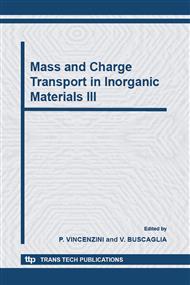p.98
p.104
p.111
p.120
p.126
p.136
p.146
p.152
p.158
Atom Probe Tomography: Studying Reactions on Top of the Tip
Abstract:
Down-scaling is a major principle of modern technology. As a consequence, the stability of many technical devices is controlled by solid state reactions that proceed on the range of a few nanometres only. On such a short length scale even basic aspects of reaction physics as fundamental as e.g. the Ficks laws of diffusion, need to be reconsidered. Only very few dedicated techniques are suitable to study atomic transport and reactions with sufficient accuracy. Among them, the atom probe tomography is exceptional, as it allows the detection and localization of individual atoms with an accuracy of a lattice constant. An almost complete reconstruction of the 3D atomic arrangement of different atomic species gets possible. This article provides an overview on recent atom probe studies of reactive diffusion. After an introduction into the principles of the analysis method, physical mechanisms of solid state reactions are discussed in view of recent experiments at metallic thin film interfaces. How does nucleation of an interfacial product take place In which way do grain boundaries influence the reaction As a technical example, the stability of Cu/NiFe GMR sensor layers is discussed.
Info:
Periodical:
Pages:
126-135
Citation:
Online since:
October 2006
Authors:
Price:
Сopyright:
© 2006 Trans Tech Publications Ltd. All Rights Reserved
Share:
Citation:


